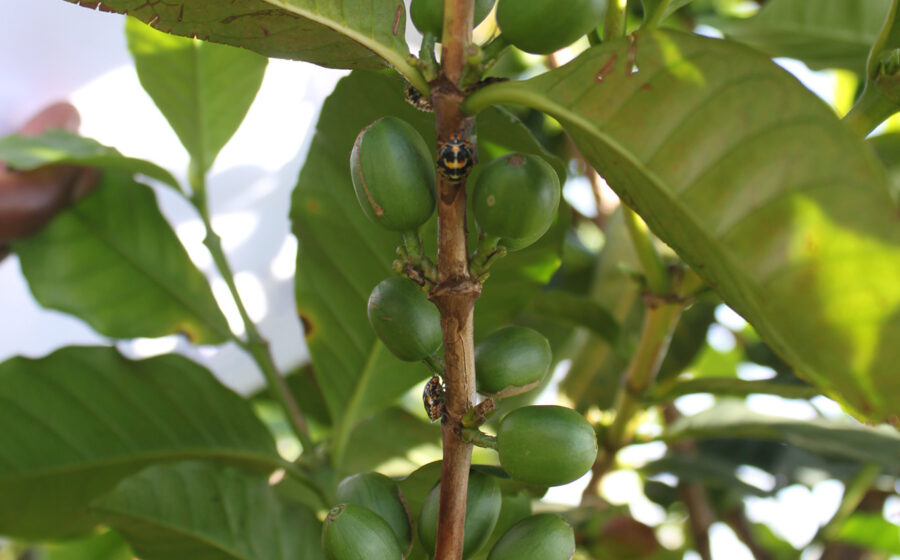[I]f you’ve tasted the potato taste defect in a Central African coffee, you won’t forget it. Like biting into a mealy boiled potato skin, the defect is one of the nastiest flavor attributes to be found in coffee, and the worst part of it is its total random occurrence. One affected bean will spoil a pour over of Rwandan coffee, for example, and the next extraction will taste fine. The defect, thought to be caused by the antestia stink bug, makes roasters and baristas wary of purchasing potentially affected coffees, but its economical impact extends to the farmers in these countries. Susie Spindler, Alliance for Coffee Excellence executive director, says, “The potato defect is one of those insidious defects that robs not only roasters of great quality but farmers of high premiums. And how it ends up being handled will really determine the fate of coffee farmers in Rwanda, Burundi, and the Congo.”
Until now, research into the antestia bug has been largely driven by universities and research foundations, and (strange to coffee professionals) has not included cupping. This is a critical lack, particularly since potato defect does not reveal itself until the coffee has been processed, roasted, and brewed. With all respect for, and building on, the research that has gone before, the ACE’s Potato Taste Challenge aims to produce quick results that will give coffee farmers in affected countries something, anything, to inform how they deal with the antestia bug.
Funded largely by ACE members around the world and working with the Global Knowledge Initiative, the Potato Taste Challenge will work with one cooperative known as COCAMU in Rwanda by dividing its 586 members into test plots. The study will be led by Joseph Bigirimana of the Rwanda Agriculture Board, who proposed it.
The Potato Taste Challenge will be a 2015 project, says Susie, but the ACE has completed a baseline cupping analysis, though it had limitations given how late we are in the coffee harvest and the random nature of the potato defect. Interestingly, she says, “Both Rwanda and Burundi are way down in incidence. We probably cupped 800 samples and had less than fifteen percent occurrence, which would indicate something is happening in both countries to affect it.” Both countries had drought conditions this year, as well as increased and organized pesticide spraying, but Susie says her guess is that the weather is impacting the bug. “It may be a cyclical bug that after a while reduces itself in number until it multiplies again.”
The first step in the Potato Taste Challenge will be in the lab, determining which is the best formula for the three different insecticides that will be used in the study and how much and how fast it should be sprayed.
The second step is to divide the farms in the co-op into test plots, train the farmers with “all kinds of extension help,” and spray and prune each plot in specified ways. Monitoring the fields to make sure the bugs don’t come back will help the researchers track how much spray is needed, as well as cost to the farmer, frequency of application, and overall effectiveness.
The last step in the Challenge is to separate the coffees at harvest and cup them under stringent ACE conditions, using the same number of samples from each plot and the control plots, and track the percentage of potato defect in each crop.
“Once we get the data in,” says Spindler, “We will share it with everybody—Burundi and Rwanda, Tanzania, Kenya, and the Democratic Republic of the Congo. My hope is that we will be the small research project that ends up giving some direction for larger, more intensive studies.” And also, she adds, that we have something to give the farmers whose livelihood depends on the price of their coffees.
—Emily McIntyre is a regular contributor to Fresh Cup.
















